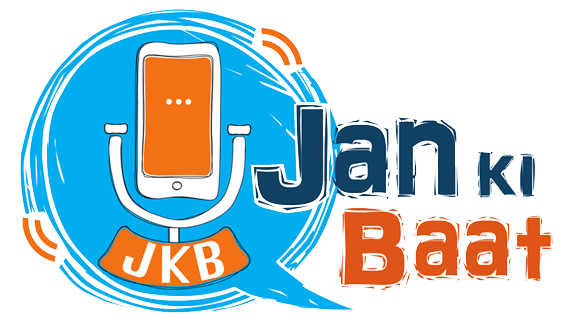The article was published on the Mint, Fri, Aug 25, 2017. 01 34 AM IST
Pradip Bhandari, 26, first realized the power of social media one day at the end of 2015 around the time the Constitution Day or Samvidhan Divas was announced in November. “I watched a debate on the TV and wanted to add some points,” says the avid debater. Later the same day, he created a live video on his Facebook profile. Next, he posted another live video airing his views on the issue of air pollution in Delhi. “I turned this into a weekly thing, and realized that a lot of people wanted to contribute their thoughts to it,” he says. This was the base set for Jan Ki Baat.
In February 2016, Bhandari quit his day job as a policy researcher at an NGO, took some seed funding from friends and family, and floated a private limited enterprise to run Jan Ki Baat. The platform runs through volunteers on the ground who post live videos, audios, photos and texts to discuss local, national and social issues on the social media, all through mobile phones.
The citizen reporters who post on the platform are varied as the issues they raise: a farmer about the Mandsaur farmer agitation; a distressed student in Delhi on an open drain near her home; an Ola driver on the Ola-Uber competition; parents who are harassed by the private school fee hike. Anyone with a smartphone and an issue to air can contribute.
Jan Ki Baat also holds live debates on their social media channels once a week, where panelists read out comments, take questions from the audience and discuss issues. “The millennial generation wants to understand, contribute, express and debate something that is not possible on a unidirectional medium like the TV,” says Bhandari, who says that social media equalizes everyone by allowing anyone to comment, post and express.
In March, during the UP election, Jan Ki Baat had 50 citizen journalists in the state reporting on-the-ground issues. In April, they covered the Delhi MCD election through the eyes of 50 Uber drivers, all volunteers to the platform, and reached 150,000 views for one of their videos.
Currently, Jan Ki Baat has 129,770 followers on Facebook and 17,900 on Twitter while its YouTube channel has 365 subscribers with a total of 197,911 views. The biggest success has been WhatsApp where Jan Ki Baat sends more than 400 messages every month to more than 200 unique groups, who forward it to their networks in states such as Uttar Pradesh (UP), Delhi, Manipur, and Jammu and Kashmir. Earlier this year, Jan Ki Baat also received the chairman’s recommendation at the Digital Empowerment Foundation’s award for SM4E (social media for empowerment) in the category of citizen media and journalism.
For a platform launched just last year, the growth has been exponential, something Bhandari attributes to the enthusiasm of the volunteers, the viral nature of the social network and to mobile phones. “Ninety percent of our content is on the mobile phone, both in creation and consumption. Mobile is the future, the device on which the next election will be run,” he says. He hopes that the Digital India initiative brings in policies to encourage cheaper, faster mobile Internet so the mobile revolution can continue to democratize India.
The challenge of doctored content
Being a moderator of a crowdsourced media company comes with its own challenges. One of the biggest is fake or doctored content. Bhandari almost got his hands burnt when a woman from UP called him up with a story about a local school where no teachers had been coming, exactly on the day Prime Minister Narendra Modi was due to visit Lucknow to anoint Yogi Adityanath chief minister of the state. Bhandari checked with other sources and insisted on a video where she interviewed teachers and children. Eventually, she was unable to comply and Bhandari found that the whole story had been made up.
“It’s essential for us to cull out fake news as even one post like that can destroy our reputation making us lose viewership, partnerships, and credibility,” he says adding that his team has now started to verify all citizen reporters through interviews and a training module. Bhandari hopes that machine-learning algorithms can be developed, which can figure out doctored content. For now, though, he has asked everyone to send him geo-tagged videos and relies on live videos as they’re “harder to doctor”.
The next steps
Jan Ki Baat launched its website in May this year and now is working on developing its own app through which citizen journalists will be able to upload videos, create communities and follow the local and interest-based news. Bhandari hopes to hire a team of engineers and launch the beta version of the app by the end of the year, following which he will look for institutional funding for the media channel as well as business partners to put the social enterprise on a sustainable footing.
Mint has a strategic partnership with Digital Empowerment Foundation, which hosts the Manthan and mBillionth awards.
